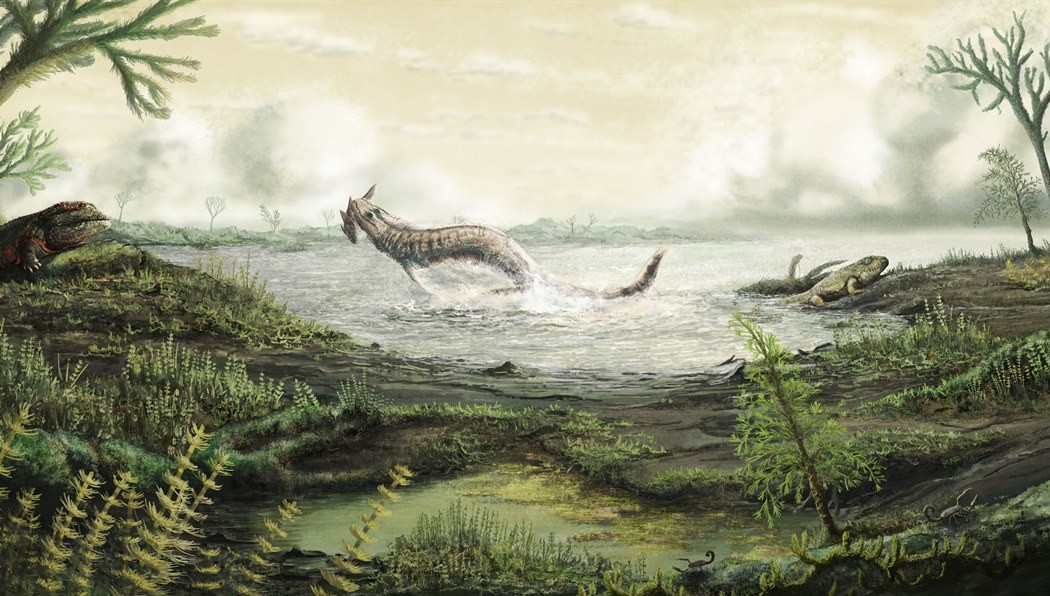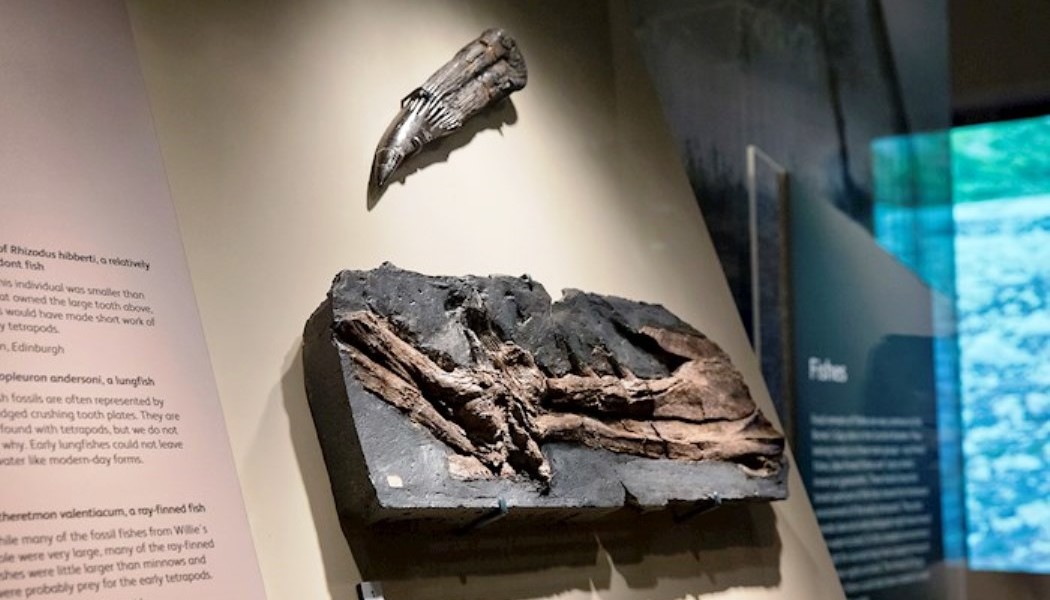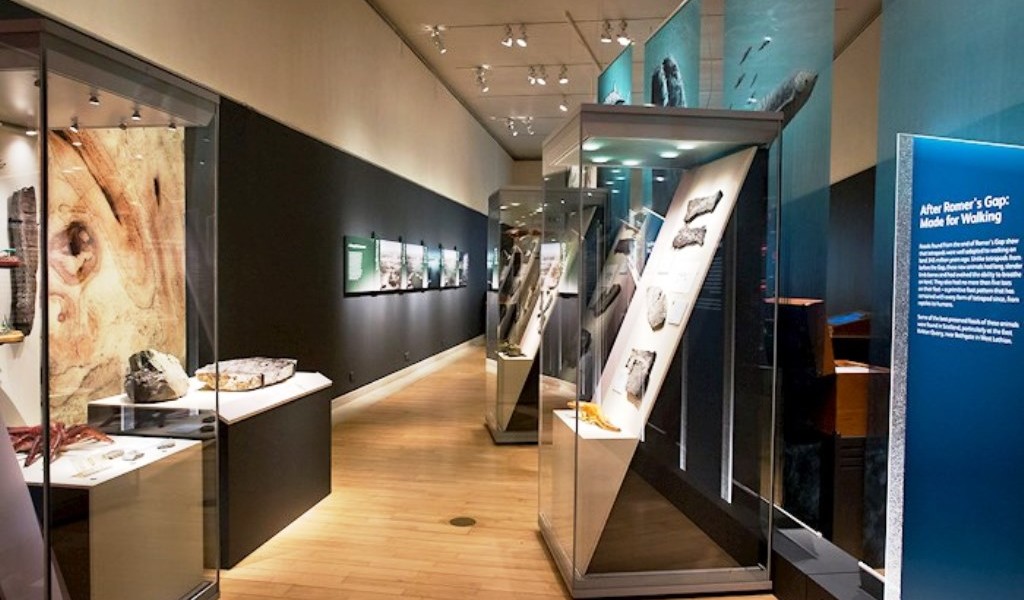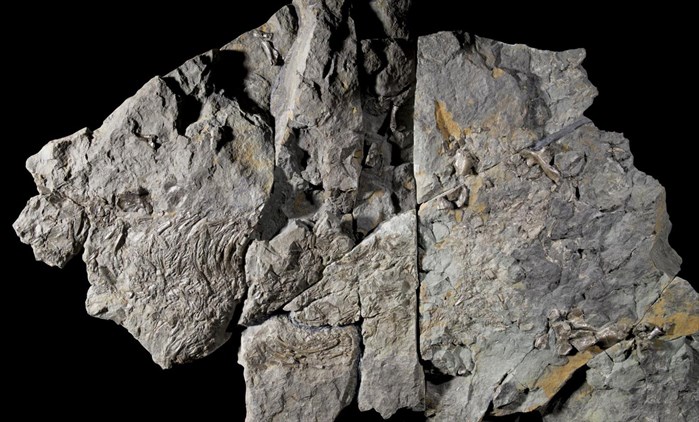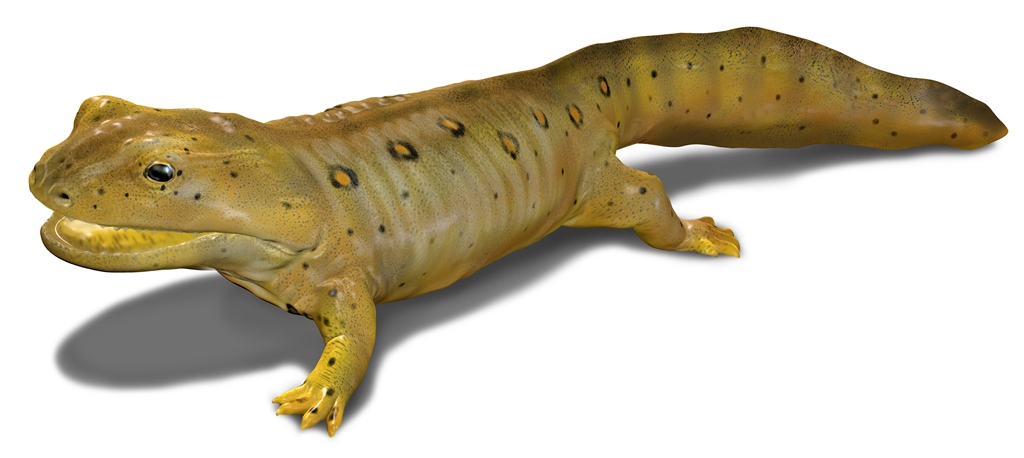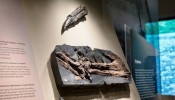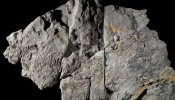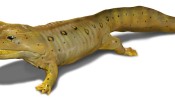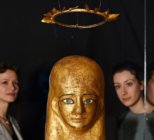National Museum of Scotland’s Fossil Hunters: Unearthing the Mystery of Life on Land is the result of a four-year NERC (Natural Environment Research Council) funded project to unearth fossils that can fill a 15-20m-year gap in the understanding of how four-legged land animals evolved.
Until recently no fossil evidence had been found to explain how vertebrate life stepped from water to land, leading to this gap scientific knowledge of evolution. Known as Romer’s Gap, this mystery has been challenging palaeontologists for generations. However, after years of searching, a breakthrough came in 2008 when palaeontologist Stan Wood uncovered a number of fossils which began to reveal this key chapter in the history of evolution, including a notable amphibian specimen nicknamed ‘Ribbo’. Spurred on by these finds, researchers from National Museums Scotland and institutions around the country have been working together to uncover more examples in Scotland.
One of the results of the find is that the exhibition has more than 50 specimens that include some of the oldest fossils of land-living tetrapods (back-boned animals with four legs). “These fossils are from the Scottish Borders and nowhere else in the world can boast such rich and diverse terrestrial fossils from this time period,” says Nick Fraser who is Keeper of Natural Sciences at National Museum Scotland and one of the curators of Fossil Hunters. “The exhibition looks at the earliest colonisation of land by back-boned animals some 355 million years ago. Until now this pivotal step in the evolution of life on earth has been shrouded in mystery because of a lack of fossils worldwide.”
Many of the fossils are on display are being seen for the very first time, while others are mostly from National Museums Scotland’s collection and the remainder from the University Museum of Zoology, Cambridge – one the research partners in the project.
“Essentially the exhibit has been in the planning for the past four years,” says Fraser. “In 2012 we began a major multi-partner research project funded by the Natural Environment Research Council (NERC) with additional support for the public programming coming from Heritage Lottery Fund.”
The discovery of a cache of vertebrate fossils by local field palaeontologist Stan Wood eight years ago was the catalyst for the project and since then various teams, including NMS, have undertaken field-work including further highly productive excavations for fossils in the area. “Sadly, Stan died in 2012 but he has left a remarkable legacy that will inspire future generations of palaeontologists,” says Fraser.
The magnitude of the find meant that scientists representing a variety of geological and biological disciplines have been involved in the research. The team is led by Professor Jenny Clack of the University of Cambridge, and key partner institutions from the universities of Southampton and Leicester, as well as the British Geological Survey. As well as traditional techniques to examine and prepare fossils the teams used CT scanning to elucidate details of fossils still encased in rock.
“We also used LiDAR scanning to record the excavation and rock outcrops in a river bed where many of the fossils were collected,” he says. The team also drilled a 500 metre core just across the border in Northumberland so that they could analyse the entire sequence of sediments spanning the few million years when tetrapods first crawled onto land.
One of the major challenges was excavating the river bed of the Whiteadder River, which is a salmon and trout river and so there was only a small window of opportunity for the team to undertake any excavation. However, to dam off the area of the river bed that we wanted to excavate in was the biggest challenge. Nevertheless the team were able to successfully divert the river and collect more than 1,000 fossils in a three week period last summer.
“We know that animals with four legs came out of the water 360m years ago and we have fossils to show that but we had almost no idea of how they came to walk and what characteristics they had,” says prof Clack. “The fossils recording the tetrapod period become scarce until 340m years ago so the finds and research have been able to fill in that gap.”
The project consists of teams working on the palaeontology, sedimentology, stratigraphy, palynology and performing stable isotope analysis, in order to discover not only how tetrapods became terrestrial, but also what the environment, plants and other animals were like and how they changed in parallel with the tetrapods.
“It’s the only place in the world where we can do that,” she says. “There is only one other place that comes close and that’s Nova Scotia where there are isolated limbs but in Scotland there are complete animals, small and large, complete with the rest of the flora and fauna.”
Fossil Hunters: Unearthing the Mystery of Life on Land runs until 14 August.
Main Image
Mark Witton-Restored scene of environment where tetrapods first crawled onto land over 350m yrs ago

